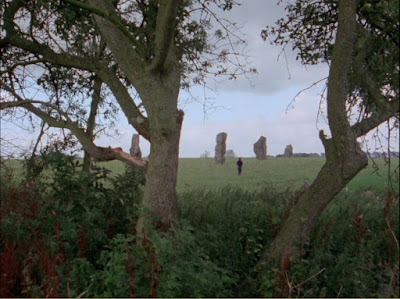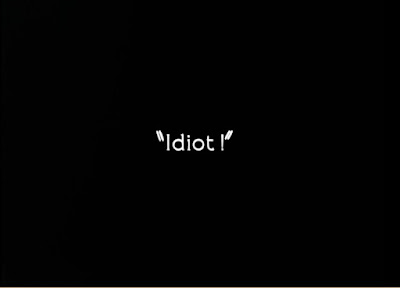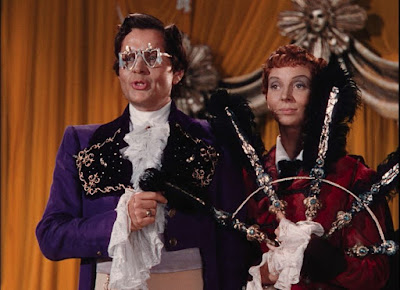“… to see a painter sit down and paint a girl, this could
be exciting, but I had the hardest time explaining to my scriptwriter that this
didn't excite me at all. What interested me was the problem of Creation and the
fact that this creation in the case of the painter was very physical. He will
have to struggle, to fight, even more strongly than he will move away from
reality.” Michael Powell
This was Michael Powell’s last feature film and his best
film since Peeping Tom for me although not without its issues.
Co-produced with the film’s star, James Mason the film is also notable for
being Helen Mirren’s first and after all that goes before its politeness or
mischief that notes her membership of the Royal Shakespeare Company during the
end credits. At least, that’s a view a more cynical viewer might make of a film
in which the actress is described by one character as being “all t***s and
legs…” and we do indeed see a lot of Helen in this film but, following the lead
character’s aesthetic indifference and the good intentions of Michael Powell,
this has to be seen as necessary.
Mason’s character, Bradley Morahan, is in search of his
artistic truth and has boxed himself into a lucrative corner as he watches his
abstract works fetching a pretty price in a New York gallery, attracting buyers
with the shallowest of motives all of whom are painted just a little too large.
The gallery manager is over-pricing his paintings and it’s working but all Brad
wants is to rediscover the authentic commitment to producing honest work.
There’s only one thing for it, and he decides to return to Queensland from
whence he came, not that his accent is giving that away, and rent a shack on an
island on the Barrier Reef.
 |
| Harold Hopkins, Lonsdale and James Mason |
The story is based on a 1938 novel by Norman Lindsay which
was initially briefly banned in Australia (until 1939) and which featured the
artistic relationship between a 40-year-old painter Bradley Mudgett and
a 17-year-old “child of nature”, Cora Ryan. Lindsay was the subject of the film
Sirens (1994) which made much of his free-thinking, bohemian lifestyle
and attitude to nudity. That film is a less honourable take on the issue than
Powell’s as any relationship between the people played by 60-year-old Mason and
Mirren, 22 when filming began in March 1968, is purely artistic for almost the
entire film and he’s not liberated by Cora’s physique or youth but by her
potency as a subject for art.
It's very interesting to hear Helen Mirren talk about the
film as one of the extras on the excellent Indicator Blu-ray set which has both
the Director’s Cut, 107 minutes with more Mirren and the original score by Peter
Sculthorpe, a leading Australian classical composer, and the 100 minute UK cut for
which the studio pulled in Stanley Myers for the score – I prefer the former,
which achieves more of a balance between the film’s tonality. Mirren enjoyed the
experience, her first major role in a feature film*, and that’s important given
that her nudity in the film could have been seen as exploitative. She was 24
and with significant theatrical experience not least with the RSC, and says she
was well treated by Powell, noting that this was not always the case with
others.
 |
| Helen Mirren, RSC on tour |
She says that the film could have taken an altogether darker
route in terms of Cora’s relationship with the much older man but, as Martin
Scorsese says in an interview on the set, confirming Powell’s views at the top,
the film is all about the creation of art and the relationship between Cora is
more about that than anything else. Scorsese points to this being a common
theme running through much of the other director’s work from The Red Shoes through
to Peeping Tom and even Honeymoon (1959). Brad’s eye is caught by
the lines of Cora’s body, her energies and connection to the gorgeous landscape
and it’s only in the very final minute that there is a physical interaction and
one initiated by Cora.
Powell used some talented artists to give Brad’s work in
progress the richness required and his artistic instincts are clearly shown to
be returning the more time he spends in his hut. John Coburn is used for the lucrative
e abstract works seen in the opening New York Gallery sale at the film’s start while
paintings and sketches by Paul Delprat were used on the island scenes. This
location was Dunk Island** off the Great Barrier Reef in northern Queensland a
spectacular and raw part of this vast country.
Brad is disgusted with the whole process of the New York
gallery sale and decides to fly back to his home country and find a wilderness
in Queensland where he grew up. In Brisbane (?) he connects with an ex-girlfriend
(Clarissa Kaye***) and the two are seen in bed in ways that will prove that in
terms of Cora, his aim is artistic. This is a sexually active man but, not only
does his art come first he is more of a “dromedary” in terms of his sexuality
than his “pal” Nat Kelly (Jack MacGowran) who, frankly, needs to be on
medication.
Nat’s slapstick laddishness is where the film veers a little
off course along with the comedic characterisations of Cora’s dipsomaniacal and
dominating grandma (Neva Carr Glyn) and local man-eater Isabel Marley (Andonia
Katsaros). MacGowran (born and raised in Dublin) plays Kelly as an unlikable
rogue and, as with Mason, his accent is a broad brush; he steals from his painter
pal and is constantly on the make. If nothing else though the interactions with
there three serve to highlight the innocence of the connection between painter
and muse.
One performer without artifice is Brad’s dog, Godfrey as
played by noted Australian terrier, Lonsdale. As with the other characters Godfrey
lightens the tone in ways that allow us to appreciate the journey as the
serious business of art, honesty and genuine connections evolves.
It’s ultimately a happy ending for Powell who sneaks enough meaning
in there to remind us all what he was capable of. He may have found it harder
to make films for the last quarter of his life but as Marty says, he never
stopped making plans some of which involved him as well as his editor, Thelma
Schoonmaker, eventually to become the third Mrs Powell.
We watched a 35mm print of the 2005 restoration and it looked glorious, wonderful colours and a tangible warmth that digital doesn't always convey in quite the same way. Such a treat to experience so many of Powell's films on celluloid. Thanks again to the BFI for this Season of Seasons!
*Helen Mirren also had a brief appearance in Don Levy’s
harrowing Herostratus (1967) and played Titania in Peter Hall’s A
Midsummer Night’s Dream (1968).
** I’m not sure it there’s a connection but in 1974 a small
community of artists was established on Dunk Island by former Olympic wrestler turned
tapestry maker, Bruce Arthur allowing a small group of creators to live and
showcase their work to many visitors. It’s still there now, just about.
*** James Mason began corresponding with Kaye after the
filming, and they were married in 1971, remaining so until Mason's death in
1984. He found a muse as well as Brad.




%202.JPG)
%20suit.png)

%20garden%202.png)



%20look.png)




























































+2.jpg)
